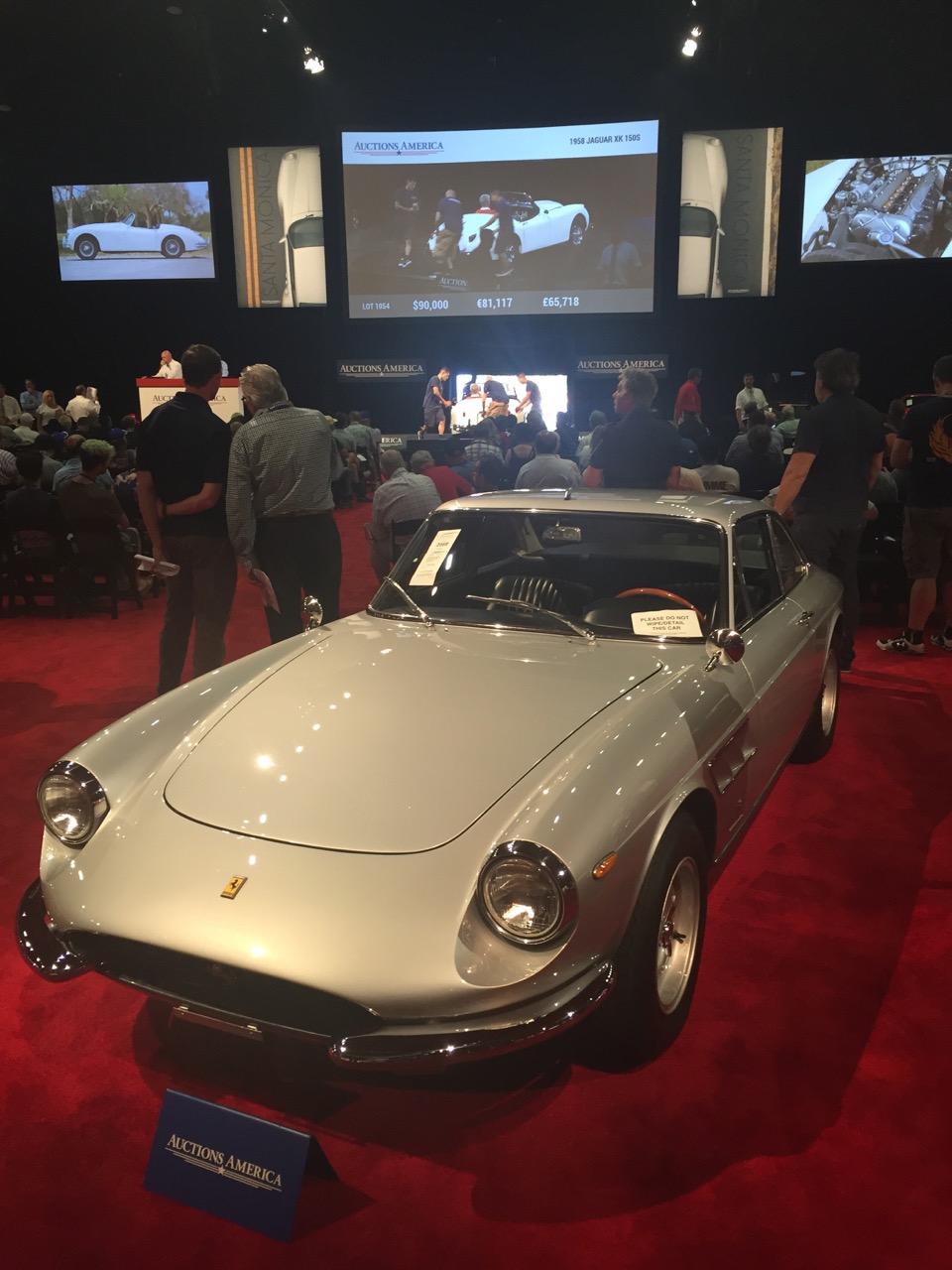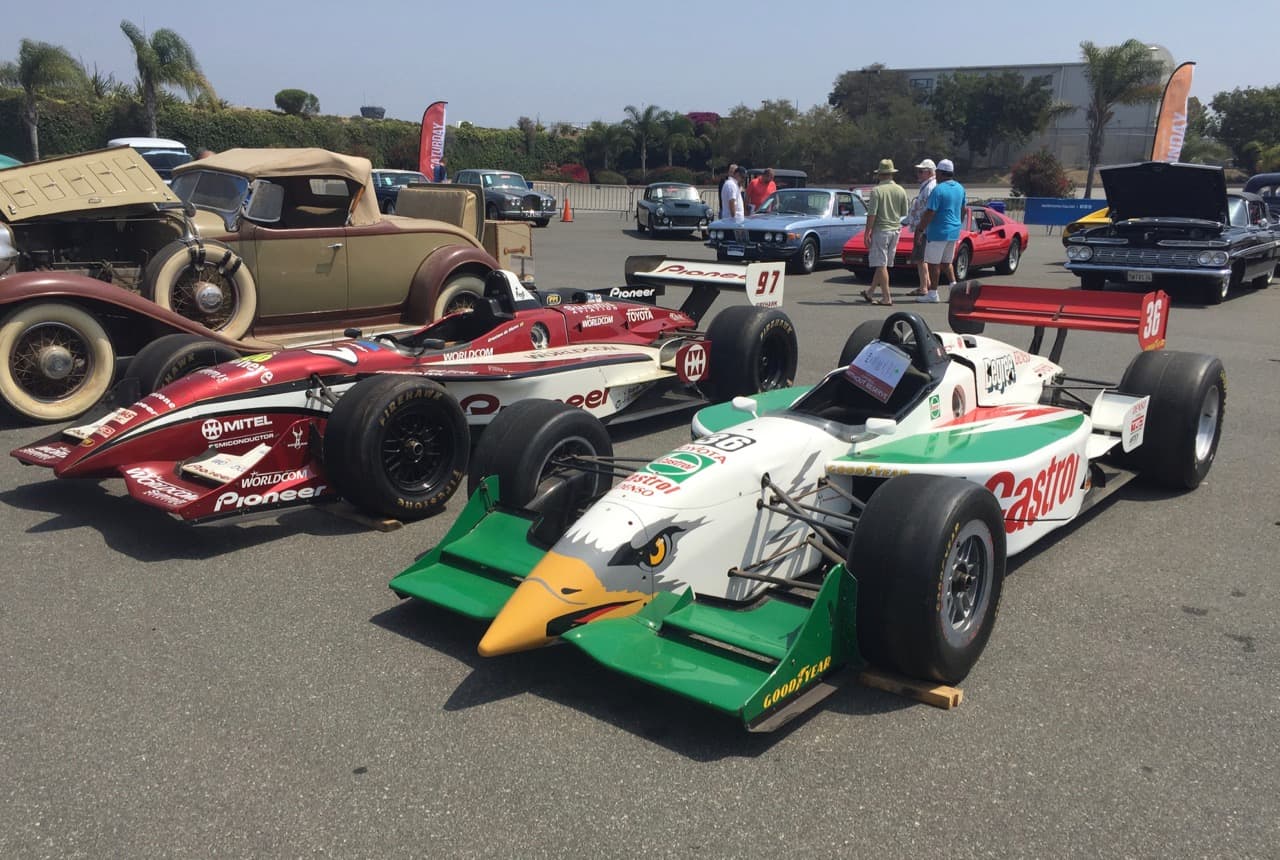
Auctions America’s Santa Monica sale was staged as a dramatic celebration of our favorite subject. The red carpet that covered the entire floor of the “grand salon” raised the level of excitement in the famous Barkar Hangar complex on the edge of the Santa Monica airport. All the cars indoors were spot-lit in an otherwise low-light atmosphere. That was a fantastic idea. Every car was important and most were rare, even though not necessarily valuable in our current car culture.
Whether on the red carpet or outside on the surrounding tarmac, the sale was an enthusiast’s trove. The million-dollar sales grabbed the headlines, but all of the rare or unusual cars on display were impossible to ignore.
A couple of examples were two AC coupes never imported to America though admired by the cognoscenti for decades. The little AC Aceca Bristol is a familiar shape as a roadster, but rarely seen in the coupe form. The AC Greyhound shares the Aceca’s Bristol-licensed prewar BMW 328 six with its three Solex carburetors. The Greyhound includes a pair of jump seats and was designed as an “executive express.” It will stop everyone in your first cars & coffee event.
There was one of Alain Clenet’s beautifully finished Series II cabriolets, created for someone who likes the character of a mid-30s car, but also wishes to travel in air conditioned luxury. It was a curious era anomaly, but almost rational and very handsome indeed.
There were a few, now treasured, Porsche 356 variations and a glorious 959 “Komfort” luxury edition. Jaguar’s XJR-S was the same idea from a different world, but a desirable long-distant fast tourer none-the-less.
Rare and curious as well was the handsome Studebaker Gran Turismo Hawk that only Toly Arutunof thought would make a good race car in 1964.
The Riverside International Automotive Museum lost its co-founder and guiding light, Doug Magnon, early this year and some of its remarkable collection of Riverside Raceway artifacts and race cars were being offered, more will be available at RM Sotheby’s in Monterey next month. Along with the sports cars from the collection at Santa Monica were some historic CART and Indy Cars that appeared to be complete, though the engines and gearboxes were empty shells. If one is assembling important elements of an enthusiast’s life for a new “man cave,” what better than a real AAR veteran with Bobby Unser — and Dan Gurney — history.
A few classics were on the grounds both restored and fascinating and unrestored and even more compelling, like the beautifully dusty barn find 1932 Chrysler CP eight roadster with it V-windshield; inspiring visions of fast running among the sports cars on one of the thousand-mile tours now in virtually every state or country.
The Auctions America group of 2016 has raised its own bar and the enthusiast audience has stepped up to raise it successes. Thanks to both we have a new series of in expensive parking lot car shows that include many marques we have only read about, some in “driver” condition that let enthusiasts own rarities the values of which seem to have climbed back out of reach.
Photography by Larry Crane





